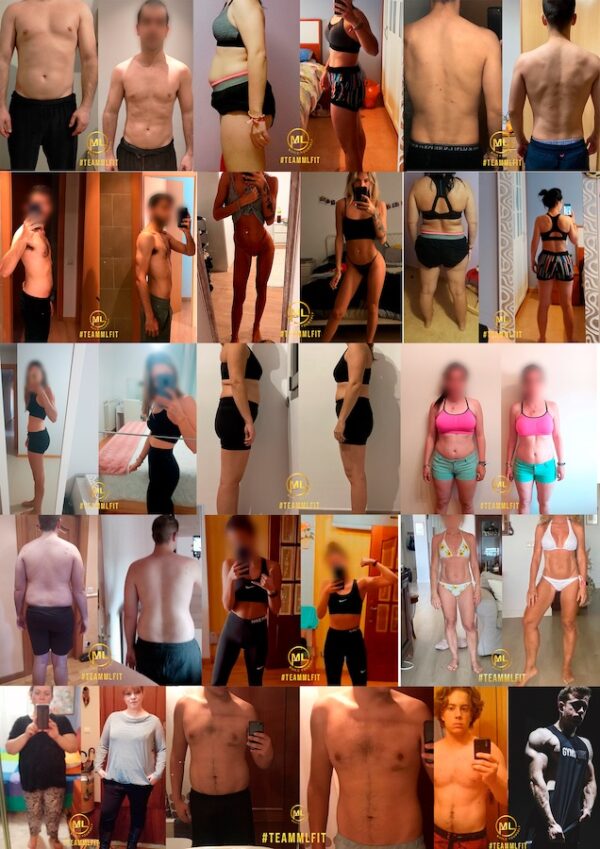
How To Make Your Meals Tastier: 5 tips
Want to know how to make your meals tastier in 5 easy steps? This is what you need to do: Use spices to give your

Cardio is one of the most common ways of exercising, it has plenty of benefits and it’s the go-to way of staying in shape for a lot of people.It is also well known for being a great tool when it comes down to burn fat and overall lose weight.
Still, there is some controversy when it comes down to choosing the best modality, especially when it comes to choosing between HIIT or LISS… which one is best for burning fat? Well, today we are going to take a brief look at both modalities and we are going to give an answer to the question: LISS vs HIIT: what is better for fat loss?

Low intensity steady state cardio (LISS)
LISS is a low intensity and long duration modality of cardio. It is basically any aerobic-based activity performed at a low intensity (anywhere between 50 – 60% of your maximum heart rate) but for a prolonged period of time (30 – 60 minutes). It can be walking, jogging, easy swimming and cycling or even using the elliptical at the gym.
It is a perfect training method for beginners in order to start building up your aerobic capacity, as well as for people that do not want a huge-impact training session and for those who should not train at a high intensity (because of injuries, hypertension, etc).
Also, there are several studies that say LISS burns more fat than HIIT (at least during the session). The theory is that fat oxidation process requires oxygen and since you are training on a low intensity your body has plenty of oxygen, so it will use your fat stores as energy source.
These are, some of the benefits of doing LISS:
High intensity interval training (HIIT)
This is a modality of training characterized by a short duration (20 – 30 mins) and a high intensity. You alternate short periods at a super high intensity (70 – 90 % MHR) with a little longer duration periods at a moderate intensity 50 – 60% (MHR). It can be done using the 1:1 or the 1:2 rule:
This has been claimed as the king of fat-burning cardio methods. The main reason why this has become so famous amongst people wanting to lose weight/fat it’s because of its ECPOC (excess post-exercise oxygen consumption). Since its a super high intensity training, it really makes an impact on your metabolism so, once you have finished your training, your metabolism will still be accelerated.
This is how it works: when you do a sprint your body demands oxygen, but during HIIT the oxygen your body receives it’s not enough, so you will be “in debt”, and that debt is settled with EPOC. So, the higher the intensity, the higher the oxygen demand, the bigger the debt and therefore, the bigger the effect of EPOC will be.
Besides, HIIT activates mitochondria production, which are cellular organelles that better the use of glucose, and it increases your VO2 max, that is, the max amount of oxygen your organism can absorb, transport and consume in a certainamount of time (more about this here).
This method has been claimed to be more effective when it comes down to burn fat AFTER your session (again, because of EPOC).
However, this is not for everyone. It is a super high intensity training modality and it is very demanding for your nervous system. You need to really be in good shape in order to incorporate it regularly into your training schedule. Also, it takes longer to recover from it and the risk of injury is higher than with LISS.
However, it has plenty of benefits too:
First of all, if what you want to know is which burns more fat, the answer is: none of them burn fat per se. In order to burnfat, you need to be in a calorie deficit. You can’t expect to do a couple of HIIT sessions a week and eat 6000kcal a day andstill burn fat.
That being said, and on the assumption that your diet is configurated and elaborated according to your goals, which is best? Again, none of them. Studies have shown that, after analyzing the overall effects, the differences between both are minimal. So, what I recommend you to do is a combination of both.
LISS will help you burn some extra calories and increase your final daily deficit without killing yourself. And HIIT, in addition to that, will also help you improve your aerobic capacity and overall physical condition. However, it will take you longer to recover and it will have a bigger impact on your training so recommend you leave, at least, a 24-hour window in between HIIT sessions.
However, if your goal is just to burn some extra calories and improve your overall physical condition, you don’t need to do all those sessions. You can though, but 2 HIIT and 1 LISS sessions would be a good starting point. You could train more, of course. This is just a recommended starting point, but it’ll will be different on every person due to a lot of different factors (overall physical condition, injuries, health problems, goals, etc.).
Ultimately, what they both do is increase your overall weekly deficit, and that’s why you lose fat. So, the choice depends entirely on you. And again, if your goal is to lose fat the number one factor that will determine whether you lose fat or notis eating on a calorie deficit.

Want to know how to make your meals tastier in 5 easy steps? This is what you need to do: Use spices to give your

A bigger chest you want? Follow these 5 tips you must: Take your time to warm up. Shoulder rotations and warm up sets are key.
